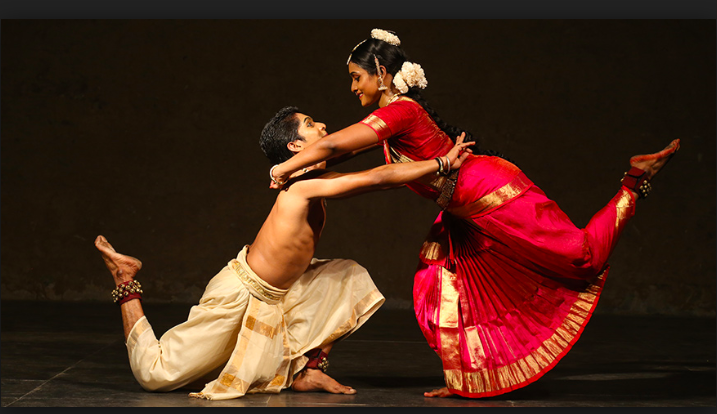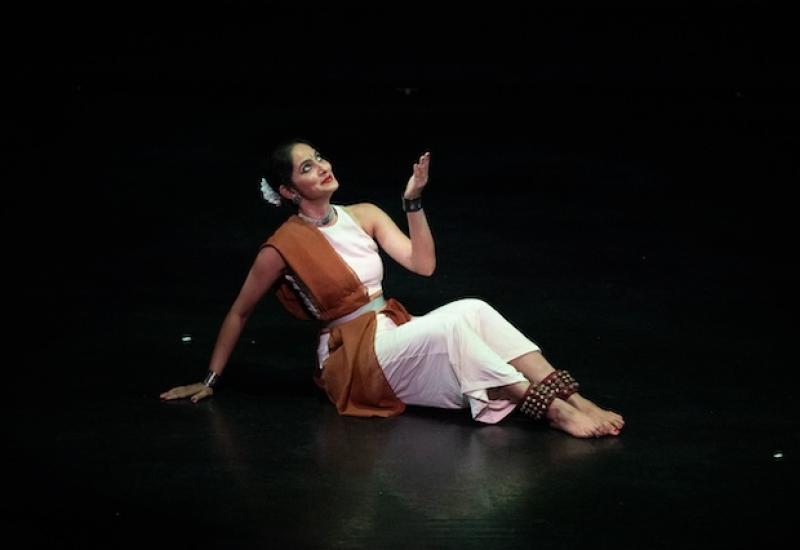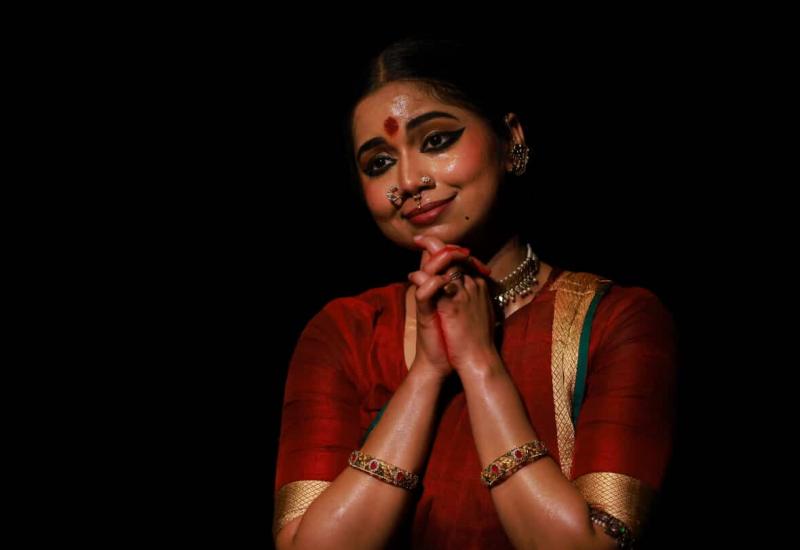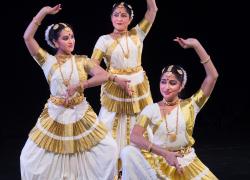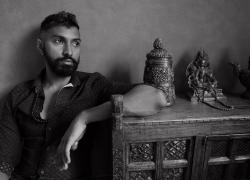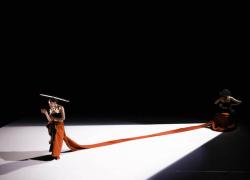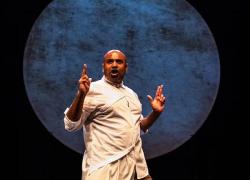Darbar Festival 2018: An Evening of Bharatanatyam
Darbar Festival 2018
An Evening of Bharatanatyam
24 November 2018
Sadler’s Wells
Reviewed by Shivaangee Agrawal
Defying Time and Space : Renjith and Neha
For its second year, the dance strand of Darbar festival flew over bharatanatyam dancers Renjith Babu and Neha Mondal Chakravarty for a simply-named ‘Evening of Bharatanatyam’. Once the audience had been treated to the trademark Darbar lights – this time rising dramatically from the floor alongside the opening musical crescendo -– the dancers stepped neatly into the square salt-lined stage that formed this year’s physical darbar and it became immediately clear that these were two extremely virtuosic performers. The relatively simple technical sequence that opened their performance was marked by very clean footwork, effortless leaps, and expert rhythmic control. But the show was about much more than technical proficiency, and after this first jathi, things quickly became more complicated and risky.
The choreography made ample use of unison – a bold move in itself when the slightest asynchrony can tarnish its appeal – but it was the partnerwork that held the delights of the evening. Renjith and Neha began without physical contact, smoothly crossing paths in close proximity. Then came pseudo-contact, whereby one body’s movement caused the other body to move, through a carefully- set sequence that did not require touch. Neha lifted her leg and Renjith’s body curled backwards in response; she swung her arm and he swayed underneath. It was during one of these duets that Renjith entered series of yogic postures that demonstrated incredible flexibility and strength, ending in a headstand that he held throughout the next section of the work. It was unclear why this was necessary or what it was signifying, but it certainly added a tangible sense of risk to the performance. When physical contact came into play, the choreography continued its exploration of the extreme, as fast technical sequences ended in a sudden counterbalance, or as the two bodies came together to form a live-motion version of the iconic image of Goddess Kali riding a lion.
Renjith and Neha reigned over the stage with their impressive presence, but they betrayed unease at several key moments in the choreography. During one section in which they clasped hands and attempted to move around the periphery of the stage together, there was a confusing tension between both dancers that considerably shrank the energy of the performance; combined with the recurring wobbles at moments of intended stillness, the show felt somewhat under-rehearsed. Considering Neha’s late assignment to the performance as a replacement for Vijna Vasudevan, this was perhaps to be expected but felt disappointing nonetheless. This was in stark comparison to the more dynamic sequences danced apart from one another, when they seemed to fly across the stage in only a couple of neat steps.
Somehow, Renjith and Neha managed to amplify their abhinaya too, such that much wasn’t lost into the gigantic abyss that can separate the stage and audience at Sadler’s Wells. The performance pivoted on the theme of bhakti towards the deities of Shiva and Kali and accumulative episodes of devotion climaxed with a madness that sang of last year’s performance by Mavin Khoo. Possessed by a divine spirit, Neha whirled around the stage in a passionate frenzy: choreography which demanded both that she forget all notions of ‘form’ and ‘dance’ and also that she top the last seventy minutes of performance with an adequately spectacular ending. She met this challenge with a full-bodied commitment and her destruction of the salt-border of the stage added visual drama too. However, I couldn’t help but read a desperation in her surrender and wondered once again whether the choreography was asking too much, or for too long. Despite a slight dissonance between them, both the choreography and the performers were spectacular in themselves and have set an extremely high bar for next year’s show. London awaits.

